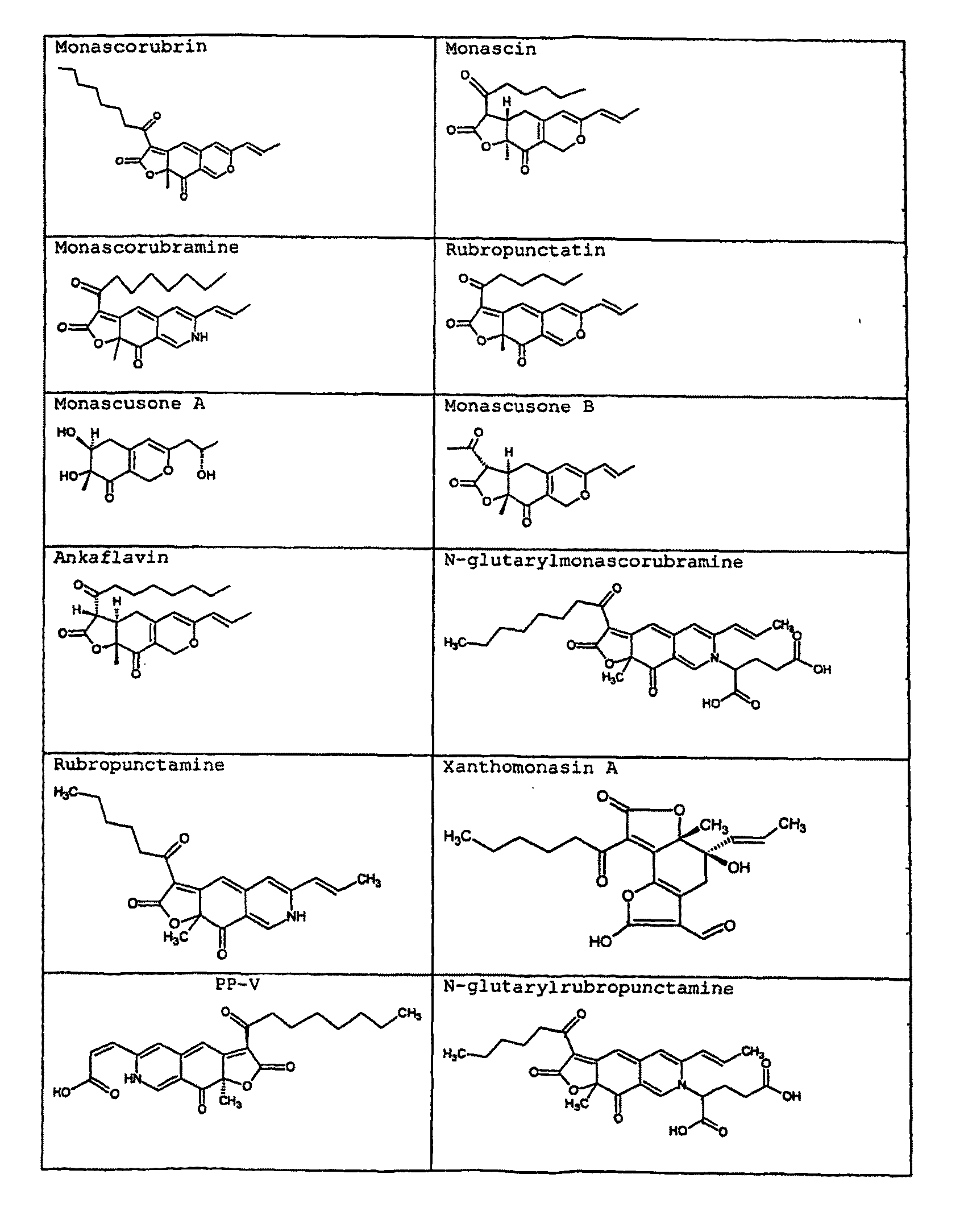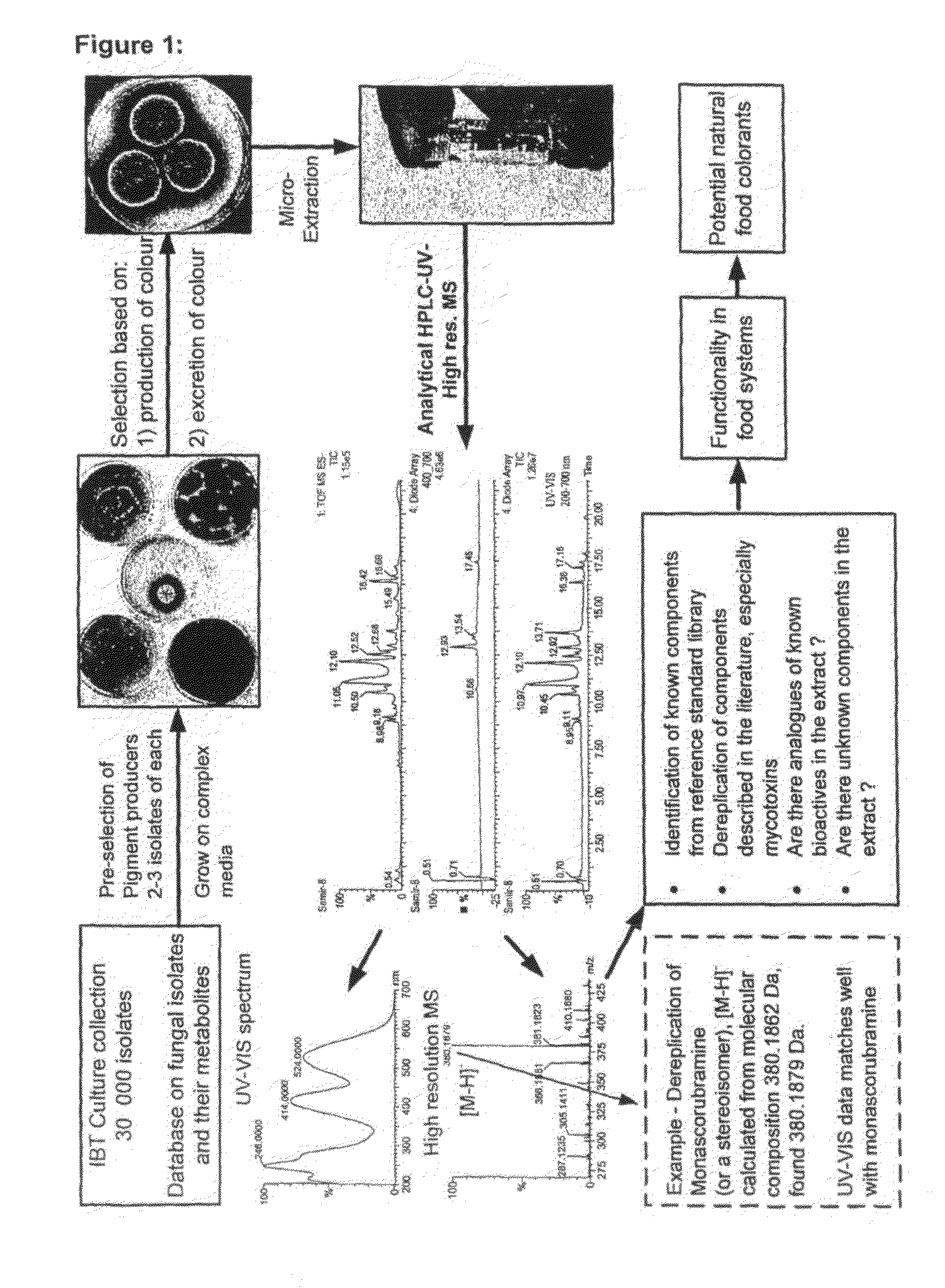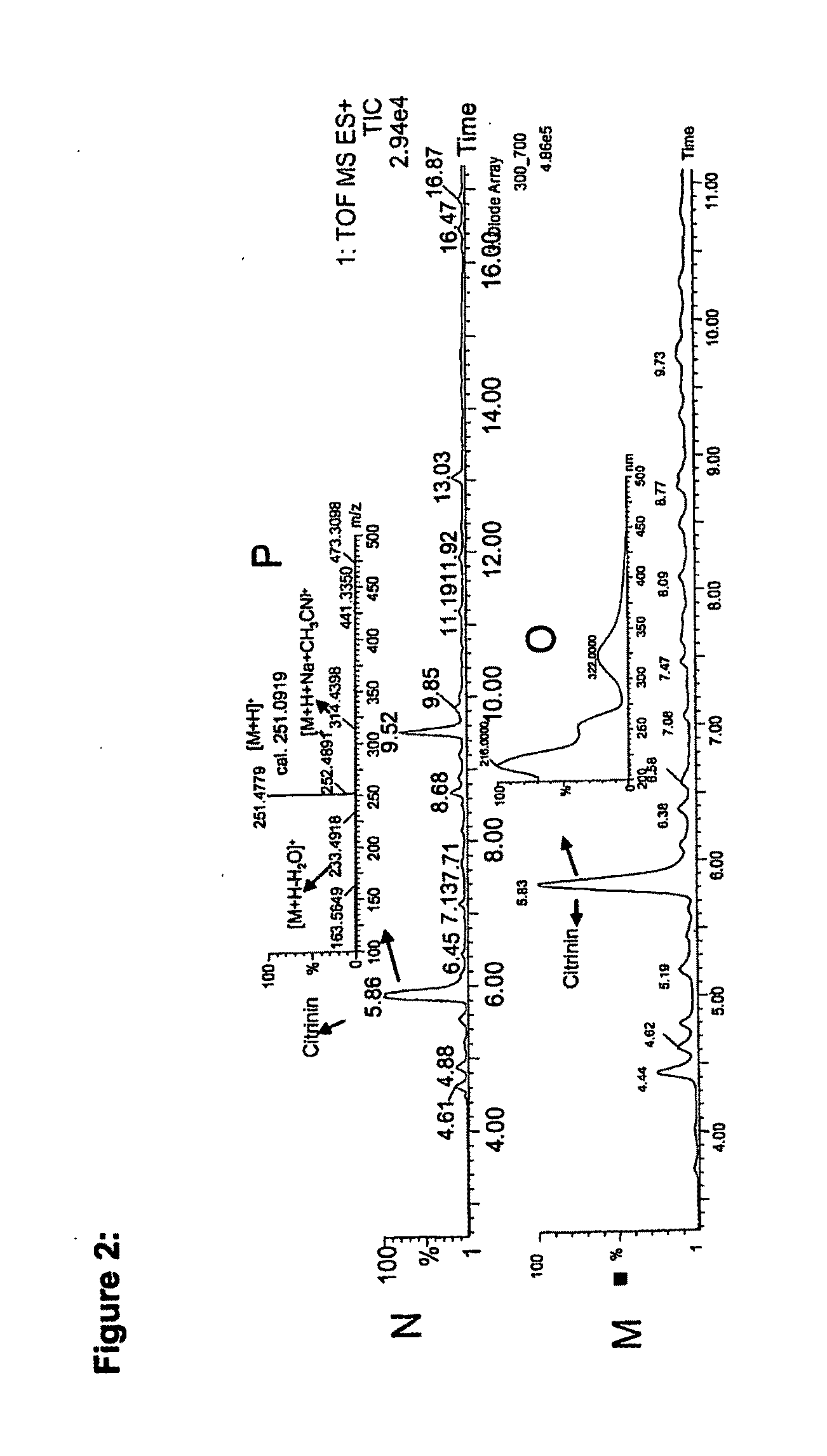Production of monascus-like azaphilone pigment
a technology of azaphilone and monascus, which is applied in the field of biotechnological production of polyketide based colorants, can solve the problems of low water solubility, limited robustness of these colour additives during, and the risk of co-production of citrinin pigments produced by i>monascus /i>species, and achieves the effect of increasing light stability
- Summary
- Abstract
- Description
- Claims
- Application Information
AI Technical Summary
Benefits of technology
Problems solved by technology
Method used
Image
Examples
example 1
Selection of Fungi, Media, and Cultivation Conditions
[0154]All fungal isolates used in this study were procured from the IBT Culture Collection at BioCentrum-DTU, Technical University of Denmark, Kgs. Lyngby, Denmark. The fungal isolates were listed by the IBT numbers. All fungi were cultivated on either of the four different solid media viz.; Yeast extract sucrose (YES) agar; Malt extract agar (MEA), Potato dextrose (PD) agar and Czapek-Dox yeast autolysate (CYA) agar (Frisvad, J. C.; Thrane, U. Mycological media for food- and indoor fungi. In Introduction to Food- and Airborne Fungi. 6th ed.; Samson, R. A., Hoekstra, E. S., Frisvad, J. C., Filtenborg, O., Eds.; Centraalbureau voor Schimmelcultures: Utrecht, The Netherlands, 2002; p 378) or in specific combinations on which maximum pigment was found to be produced with interesting colour hues in the red to yellow spectra. The cultures were incubated in the dark at 25° C. for 7 days.
[0155]The pigment producing fungi that exogenously...
example 2
Extraction of Fungal Pigments
[0156]Extraction was carried out by a modified version of the micro-extraction method by Smedsgaard (J. Chromatogr. A 1997, 760, 264-270), where 6 mm plugs were extracted in two steps in a 2 ml vial for 30 minutes, first using 1 ml ethyl acetate with 0.5% formic acid to break open the cell wall and extract relatively apolar metabolites. The extract so obtained was then transferred to a new 2 ml vial and evaporated in vacuo. The second extraction was performed using 1 ml methanol or isopropanol based on our preliminary results indicating maximum pigment extraction from the specific pigment producing fungus. Since the exact chemical nature of pigments varied from fungus to fungus, it was necessary to use the appropriate solvent for the specific strain. By doing so we could extract maximum colour. However, same solvent system was used to extract for the same strains cultured in different media. The second extract was then added to the vial with the residue ...
example 3
Analysis of Pigments
[0158]3.1 Colorimetry: The absorbance values of pigments in the filtered fermentation broth were adjusted at their respective absorption maxima with purified water, obtained from a Milli-Q system (Millipore, Bedford, Mass.), as a diluent, so as to measure absorbance within the linearity of Beer-Lambert's law. The dilution factor was then taken into consideration in order to calculate the yield in terms of volumetric production absorbance unit (AU) / 100 ml of the broth. The absorption maxima were determined by scanning the extracts for their absorption spectra over the range of 350-700 nm, using a spectrophotometer (Agilent HP 8453, Agilent technologies, Palo Alto, USA).
[0159]Absorbance values were also used to determine the color quality. Absorbances recorded at the pigment absorption maxima were two characteristic absorption peaks in the visible region of spectra, the first one at around 495 nm and the other one ranged from 407-420 nm. The ratios of the two absor...
PUM
| Property | Measurement | Unit |
|---|---|---|
| pH | aaaaa | aaaaa |
| volume | aaaaa | aaaaa |
| concentration | aaaaa | aaaaa |
Abstract
Description
Claims
Application Information
 Login to View More
Login to View More - R&D
- Intellectual Property
- Life Sciences
- Materials
- Tech Scout
- Unparalleled Data Quality
- Higher Quality Content
- 60% Fewer Hallucinations
Browse by: Latest US Patents, China's latest patents, Technical Efficacy Thesaurus, Application Domain, Technology Topic, Popular Technical Reports.
© 2025 PatSnap. All rights reserved.Legal|Privacy policy|Modern Slavery Act Transparency Statement|Sitemap|About US| Contact US: help@patsnap.com



